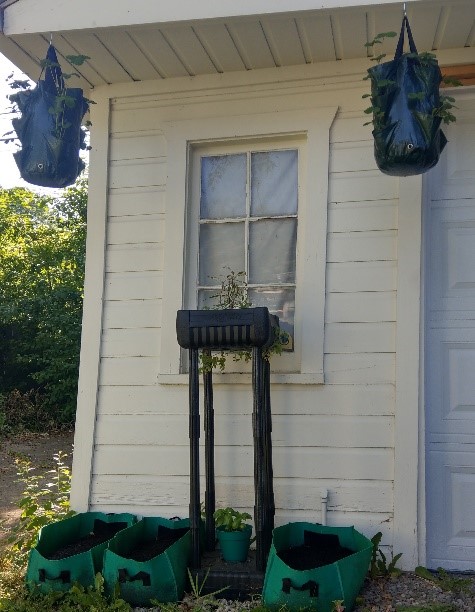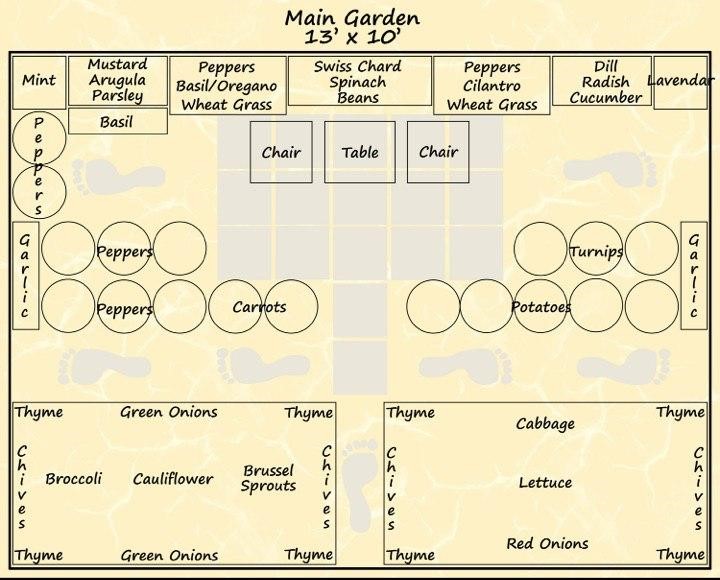Podcast: Play in new window | Download
Subscribe: Apple Podcasts | Android | Email | Google Podcasts | Stitcher | TuneIn | Spotify | RSS
[Editor’s Note: The following is an article by Miriam Zachariah, originally published in the 7th issue (July 2020) of Road To Anarchy, a zine YOU need to be subscribed to. I figured it would be a perfect fit for TVP, and so here it is! Please enjoy. -Shane]
Renting an apartment or house can limit your ability to be self-sufficient, but growing some or all of your own produce is still possible. Renting just means becoming more creative with your space. Utilize your patio/balcony space, or ask your landlord if you can utilize a section of the land or yard. A rental house can give you more options, but may still have limitations such as the health of the soil, the traffic in your immediate area, flooding, or extreme dryness.
Miriam’s Backyard Patio Garden
Miriam, a renter in the Detroit, Michigan area, shares.
“The house I currently rent sits on a major five lane road and a majority of the backyard floods. I did not want to plant a garden in the front due to the pollution and ease of access to my garden. I wanted to cultivate and enrich the soil in the backyard, but was limited due to the aforementioned flooding. The first two years I lived here, I requested the landlord to add more soil to the backyard. They never did get around to it, so I decided to utilize small sections of the backyard that do not flood. I later realized that if I do the work of creating healthy organic soil, I want to take it with me when I move. As a result, I decided to use a variety of planters and to grow vertically with pallets and shelving.”
Watch on Bitchute.
In order to supply herself with a diverse and abundant garden, she had to plan out what she wanted and where to plant them. Miriam knew about companion planting, and in order to maintain her organic garden, she wanted to use as few additives and chemicals as possible, keeping it natural. Companion planting was a cheap and organic-approved method for keeping away pests and unwanted plant illnesses.
Miriam has a pot dedicated to the “Three Sisters” method. Miriam explains, “The ‘Three Sisters’ are corn, climbing beans, and squash. First, you plant the corn for support; it’s the natural trellis for the beans. Once the corn is five inches tall, plant the climbing beans; the beans nurture the soil with nitrogen fixation. One week after the beans go in, plant the squash. The squash will protect the ‘sisters.'”
The “Three Sisters”
Miriam further explained other methods of companion planting. Around the perimeter of her garden, she’s planted onions and garlic to ward off pests. Miriam planted her asparagus and tomatoes together to protect each other from various insect threats. She added basil in various places to ward off aphids, asparagus beetles, mosquitoes, tomato hornworms, and white flies. Miriam also knew certain plants do not do well together, such as tomatoes and potatoes, but used a companion planting chart to make sure she was not planting near other non-companion plants. Miriam has also placed her sage to attract pollinators, plus marigolds and yarrow as natural pest deterrents, all of which enhance her natural apothecary closet.
Miriam’s garden, while renting, is all in pots and containers. She has really thought outside the planting box when creating her delicious garden. She has repurposed pallets and cans to serve as planters for herbs and smaller plants. This aligns perfectly with the fact that all of Miriam’s garden is portable, allowing her to take her movable salad anywhere she decides to live.
In the main garden, I planted onions, garlic, carrots, peppers, cabbage, sprouts, lettuce, potatoes, turnips, thyme, mustard, lavender, marigold, yarrow, elderberry, choy, arugula, spinach, dill, basil, wheat grass, oregano, cilantro, mint, broccoli, cauliflower, chard, parsley, beans (bush), cucumbers, and radishes. In other various planters, I have horseradish, comfrey, chamomile, echinacea, lemon balm, fennel, rosemary, sunflowers, and lemon grass. I planted my tomatoes, asparagus, and strawberries elsewhere, along with the sage and basil.
So, now that the planting has been done, what now? How does one follow through in order to harvest the bounty? “Pest control”, Miriam readily responds.
In Michigan, Miriam has experienced prolific chipmunk and small animal problems. Cute and adorable, yes, but these fuzzy little menaces wreak havoc on a subtle and lush garden of greens and delicious roots. Miriam, from the start, wanted an organic and enriched garden, so she again had to think outside the box when dealing with pests.
She started with planting the garlic and onions around the perimeter. It helped a little, but was just not enough to combat hungry squatters. She then upped her game, preparing her own garlic spray to douse the plants and ground cover. Again, she noticed a bit of aid but still not nearly potent enough to ward off feasting nature.
Lastly, Miriam broke out the big guns. She purchased coyote urine to spray a perimeter around the plants. The theory is if you spray a predator’s urine on a location, it will scare the prey away for fear of becoming a snack.
“Do not open coyote urine in your house! I was so excited when I got my coyote urine that I wanted to put the spray attachment on it and use it right away. I did not realize the potency of the smell upon opening and ended up having a house that smelled like coyote urine for a couple of days,” Miriam warns.
Road to Anarchy also tends to a container garden. Though the house is owned and not rented, the containers provide the ability to move to better soil or a more ideal spot for sun/shade. There are several links on how to start a container garden; however, our best advice, just get out there and start! Gardening is a trial and error activity and the only way to get a green thumb is to shove it in some dirt. Big thanks to Ms. Miriam for inviting Road to Anarchy into her rad self-sustaining gardening lifestyle. For more information about Miriam and her wild ride into growing mobile, organic food, contact her at [email protected].




